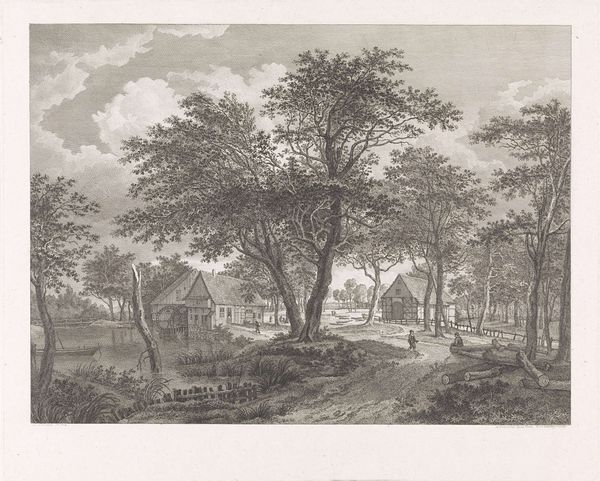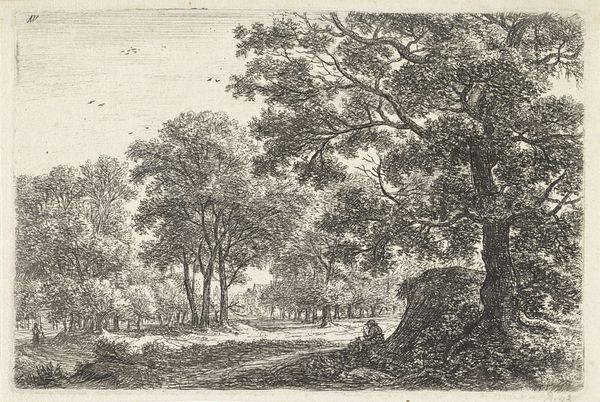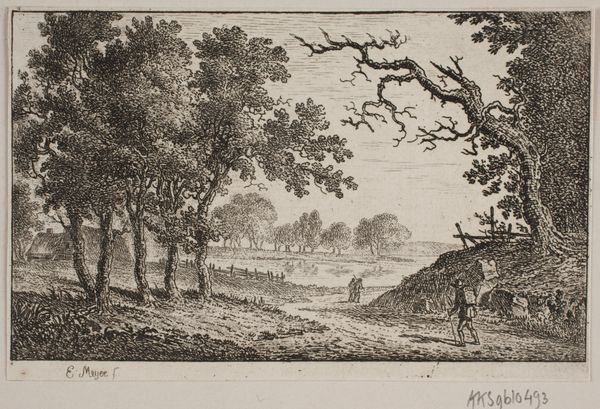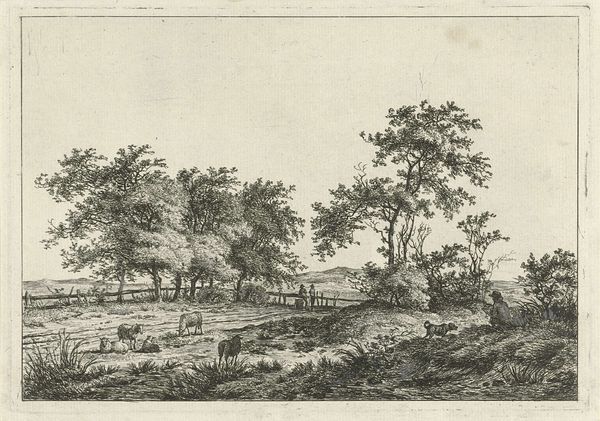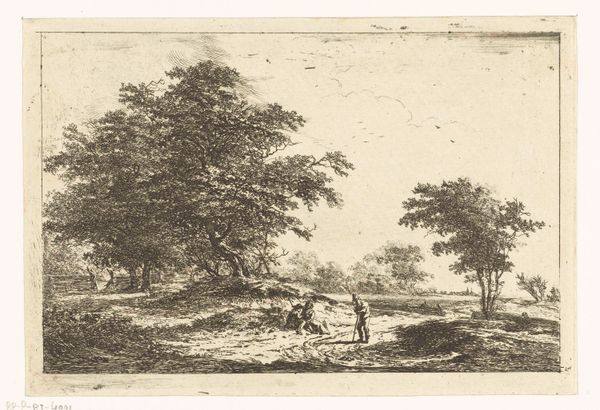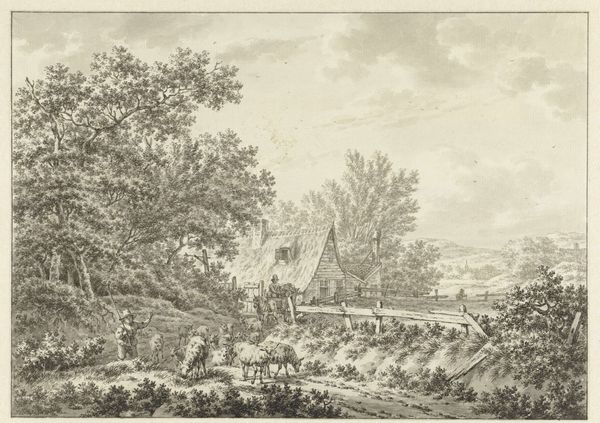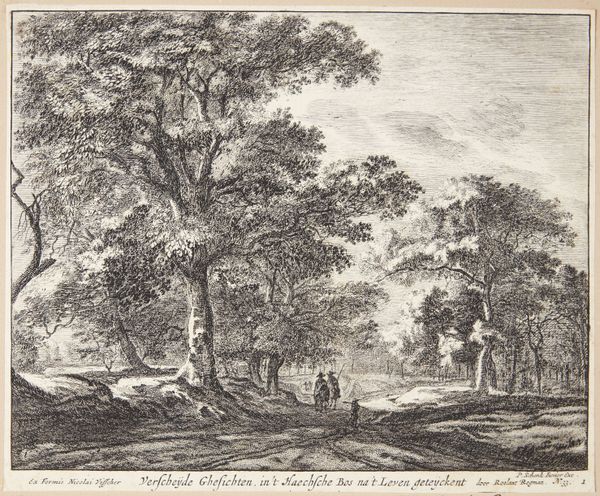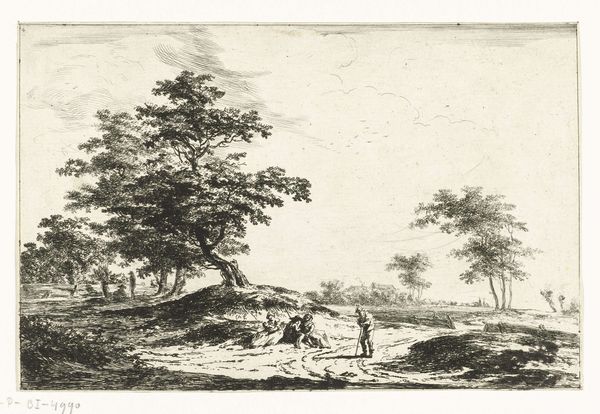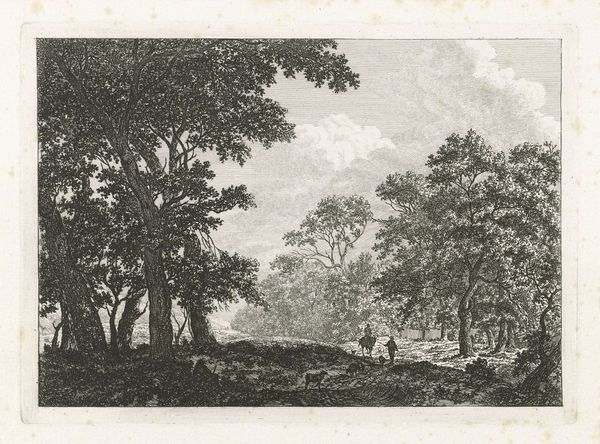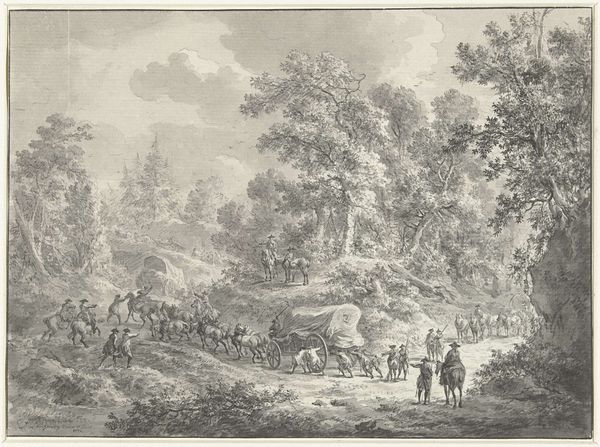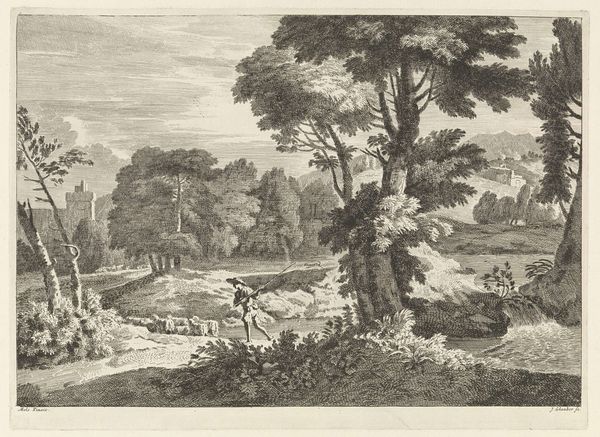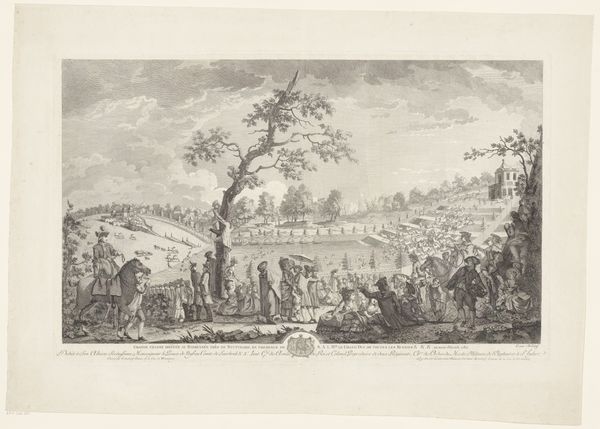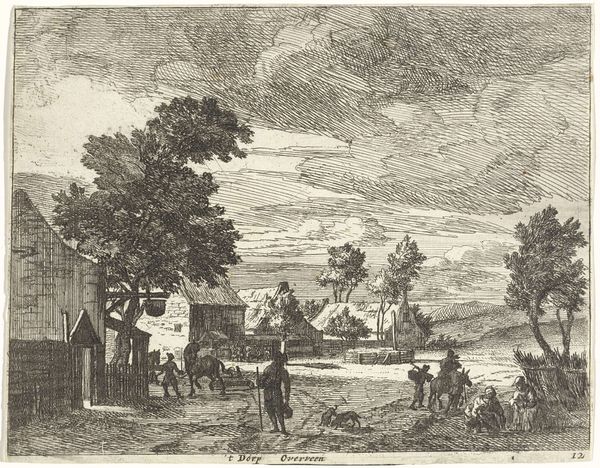
print, engraving
#
dutch-golden-age
# print
#
dog
#
landscape
#
genre-painting
#
engraving
Dimensions: height 312 mm, width 389 mm
Copyright: Rijks Museum: Open Domain
Reinier Vinkeles created this print called ‘Landweg aan de rand van een dorp’ in the Netherlands, sometime around the late 18th or early 19th century. It depicts a rural scene with figures traveling along a road at the edge of a village, but it may also tell us something about the changing social fabric of the Dutch Republic during that time. Consider the contrasting modes of transport: a horse-drawn carriage suggests wealth and status, while the figures on foot are more likely common laborers. The way the village is depicted, nestled amongst the trees, evokes a sense of idyllic rural life. But was this an accurate reflection of reality, or an idealized image of it? The Dutch Republic was undergoing significant economic and political changes during Vinkeles's lifetime, including growing urbanization. Images like these can be viewed as nostalgic expressions of a vanishing way of life, or perhaps even subtle critiques of emerging social inequalities. The historian uses archival sources like census records, economic data, and period literature to investigate the relationship between artistic representations and the lived experiences of people at the time. This can tell us about the complex interplay between art and social reality.
Comments
No comments
Be the first to comment and join the conversation on the ultimate creative platform.
